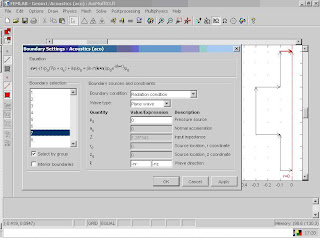Dj Marky
 El otro grupito fue Jeffrey Lewis
El otro grupito fue Jeffrey Lewis
Cheers!
Cultura Popular matizada con los efectos de la Tecnología y la Ciencia en un grupo de jovenes del sur del mundo.
 El otro grupito fue Jeffrey Lewis
El otro grupito fue Jeffrey Lewis





















Brief Introduction
The empirical Mode Decomposition is a relatively new method for analysing nonlinear and non-stationary data. The key part of the method is the `empirical mode decomposition' method with which any complicated data set can be decomposed into a finite and often small number of `intrinsic mode functions' (IMF) that admit well-behaved Hilbert transforms. In this work, the first approach considers the aplication of the Fourier Transform on each Intrinsic Mode Functions in order to analyze the decomposition in the frequency domain and correlated these spectrums with anthropomorphic data.
Let x(t) a time dependent signal, the EMD method focuses on the level of local oscillations and decomposes the signal into a finite and often a small number of fundamental oscillatory modes. The bases (IMFs) into which the signal is decomposed are obtained from the signal itself, and they are defined in the time domain. They have the same length as the original signal and preserve the frequency variations with time. The base modes can be made approximately complete and nearly orthogonal with respect to each other. Here, completeness implies that the original signal can be reconstructed without any loss of data by simply adding up the IMFs. Therefore the IMFs can be viewed as linear components of the original or source signal x(t)
In order to achieve this, two conditions need to be satisfied:
(a) The total number of extrema of IMF(t) must be equal to the number of zero crossings (or only differing by at most one)
(b) The mean of the upper envelope IMFu(t) and the lower envelope IMFl(t) be zero.
1) Identify all the extrema of x(t)
2) Interpolate between successive maxima and minima (say cubic splines), respectively, to obtain upper and lower envelopes (say, by using cubic splines), IMFl(t) y IMFu(t) respectively.
3) Calculate the local mean m(t) between the envelopes
4) Subtraction of the average from the original to yield d(t)=x(t)-m(t)
5) Repite steps (1-3) until d(t) satisfies the two conditions for being an IMF. Once an IMF is generated, the residual r(t)=x(t)-IMF1(t) is regarded as the original signal, and steps (1-4) are repeated to yield the second IMF, and so on
Huang [2] propose two stopping criteria:
a) The S number: S is defined as the consecutive number of siftings, in which the numbers of zero-crossing and extrema are the same for these S siftings.
b) SD is smaller than a pre-set value, where

Another criteria is proposed by Rilling et al [3] [4]. This criteria is based on two thresholds, teta1 and teta2, and aimed at guaranteeing globally small fluctuations in the mean while taking into account locally large excursions. This amounts to introduce the mode amplitude

And the evaluation function
for some preescribed fraction (1-alfa) of the total duration, while
One can tipically set alfa=0.05; teta1=0.05 and teta2=10*teta1 (default values in emd.m at [4])
The procedure is complete when either the residual function becomes monotonic, or when the amplitude of the residue falls below a pre-determined small value so that further sifting would not yield any useful components. These features guarantee the computation of a finite number of IMFs within a finite number of iterations. The outcome of the EMD procedure is the following decomposition of the original signal:
Applying the Fourier Transform (The Fourier Transform is the first stage of this paper. If there are bad results, the second stage considers the Hilbert Transform and consequently to apply the Huang-Hilbert Transform to the HRTF analysis)

Then, the hypotheses are:
1) It is possible to recognize the contributions of the different human organs, such as pinnae, torso, head, etc; to the spectral changes of the HRTF using the empirical mode decomposition method
2) It is possible to label each IMF to morphological data.
This work uses the CIPIC HRTF Database [5] and the EMD implementation by Rilling et al [3] [4]
The emd options were setted as:
opt.display=2;
opt.maxiterations=2000;
opt.stop=[0.01,0.1,0.02];
The figure 1 shows the left ear Hrir for 0º azimuth and 0º elevation, the figure 2 for the right ear. (Sampling frequency was 44.1 kHz)
Figure 1 - HRIR (0,0) - Left ear - Subject003 CIPIC HRTF Database
Figure 2 - HRIR (0,0) - Right ear - Subject003 CIPIC HRTF Database
The figures 3 and 4 show the respective HRTFs.
Figure 3 - HRTF (0,0) - Left ear - Subject003 CIPIC HRTF Database
Figure 4 - HRTF (0,0) - Right ear - Subject003 CIPIC HRTF Database
The figure 5 shows the first five IMF of the HRIR (0,0) related to the left ear, the figure 6 show the IMF6 to IMF9 and the residual.
Figure 5 - IMF1 to IMF5 of the HRTF (0,0) - Left ear - Subject003 CIPIC HRTF Database
Figure 6 - IMF6 to IMF9 and the residual of the HRTF (0,0) - Left ear - Subject003 CIPIC HRTF Database
The figure 7 and 8 displays the samen information for HRIR (0,0) related to the rigth ear.
Figure 7 - IMF1 to IMF5 of the HRTF (0,0) -Right ear - Subject003 CIPIC HRTF Database
Figure 8 - IMF6 to IMF9 and the residual of the HRTF (0,0) - Right ear - Subject003 CIPIC HRTF Database
 Figure 9 - Absolute differences between the original signal and the reconstructed signal of the HRIR (0,0) Left ear (above) and HRIR (0,0) Right ear (below)- Subject003 CIPIC HRTF Database
Figure 9 - Absolute differences between the original signal and the reconstructed signal of the HRIR (0,0) Left ear (above) and HRIR (0,0) Right ear (below)- Subject003 CIPIC HRTF Database Figure 10 - HRTF from the original data (above) and the reconstructed data (below)
Figure 10 - HRTF from the original data (above) and the reconstructed data (below) Figure 11 - Fourier Transform of the IMF1 (blue), IMF2(green) and IMF3 (red) of the decomposed signal (HRIR (0,0) left ear - Subject 003 - CIPIC HRTF Database)
Figure 11 - Fourier Transform of the IMF1 (blue), IMF2(green) and IMF3 (red) of the decomposed signal (HRIR (0,0) left ear - Subject 003 - CIPIC HRTF Database) Figure 12 - Fourier Transform of the IMF1 (blue), IMF2(green) and IMF3 (red) of the decomposed signal (HRIR (0,0) right ear - Subject 003 - CIPIC HRTF Database)
Figure 12 - Fourier Transform of the IMF1 (blue), IMF2(green) and IMF3 (red) of the decomposed signal (HRIR (0,0) right ear - Subject 003 - CIPIC HRTF Database)
